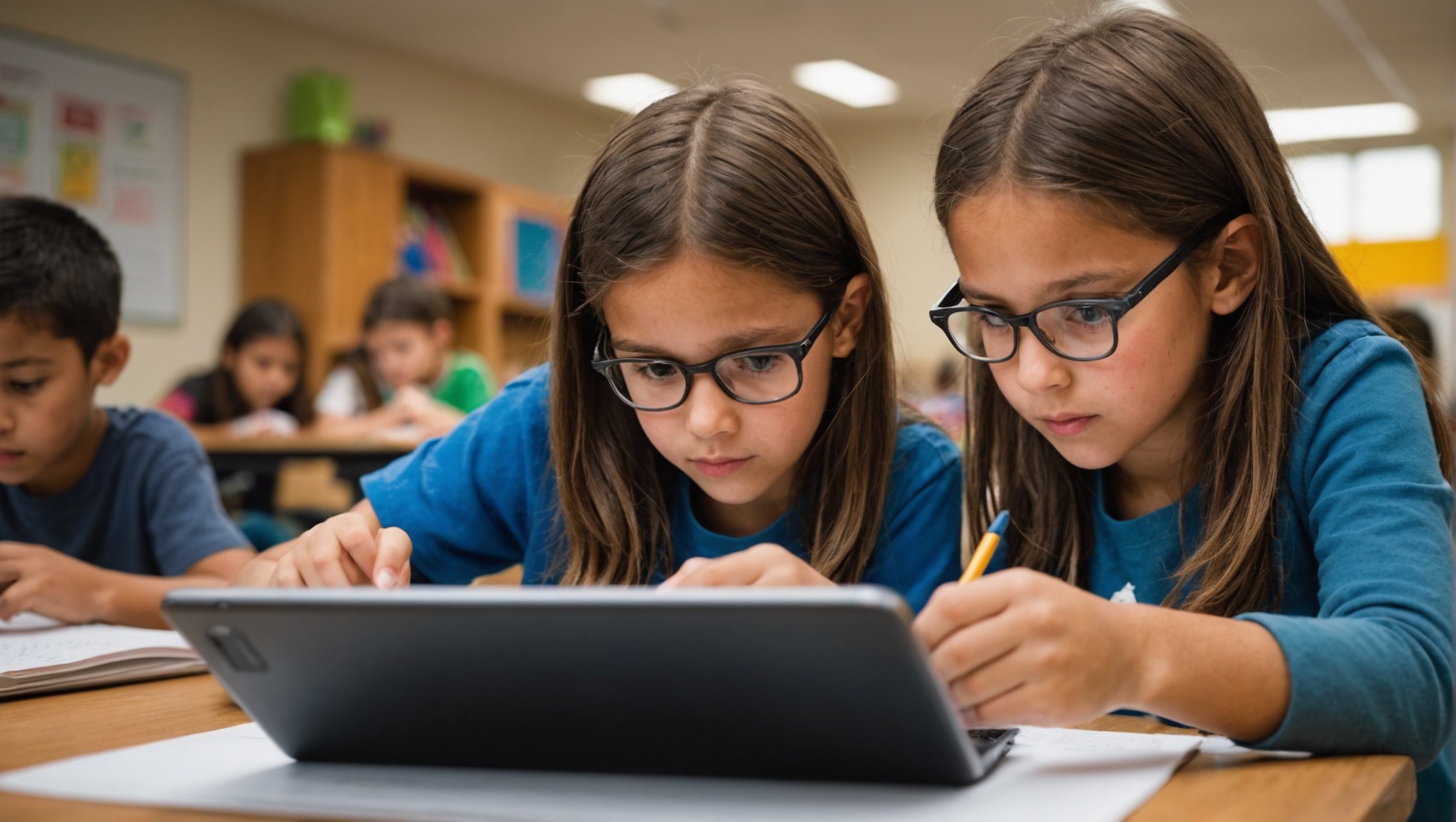In today's digital age, kids are spending more time than ever on screens. This surge in screen time is linked to a troubling rise in myopia, or nearsightedness, among school-aged children. Researchers are uncovering how excessive near-work activities, like gaming and scrolling, may hinder proper eye development. Understanding this connection is vital for parents, educators, and healthcare professionals seeking to protect children's vision and overall health. Explore how lifestyle changes can mitigate this growing issue and promote better eye care for the younger generation.
The Rise of Myopia in School-Aged Children
The prevalence of myopia among school-aged children has seen a significant increase over recent years. This uptick in nearsightedness is not just a localized issue but a global concern, with statistics revealing a worrying trend. Recent studies indicate that nearly half of the world's population could be affected by myopia by 2050, with a large portion of these cases emerging in children. This sharp rise in myopia prevalence highlights the need for increased awareness and proactive measures.
In the same genre : Unlocking Restful Nights: The Role of Cognitive Behavioral Therapy in Alleviating Chronic Insomnia Among Seniors
Several age-related factors contribute to the growing number of myopia cases in children. One primary factor is the increased time spent on near-work activities, such as reading and screen use, which has become more prevalent with the advent of digital learning. Additionally, reduced outdoor activities have been linked to the rise in myopia, as exposure to natural light is believed to play a role in healthy eye development.
Understanding these contributing factors is crucial for parents, educators, and healthcare providers to implement strategies that can help mitigate the risk of myopia in children. Encouraging balanced screen time, promoting outdoor play, and regular eye check-ups are essential steps toward safeguarding children's eyesight and addressing the myopia epidemic.
Also to discover : Exploring the Impact of Essential Oils on Alleviating Anxiety While Speaking in Public
The Impact of Prolonged Screen Time on Vision
In today's digital age, screen time effects are becoming a significant concern for children's vision health. Extended periods spent on screens can lead to digital eye strain, characterized by symptoms such as headaches, blurred vision, and dry eyes. These discomforts arise from prolonged focus on digital devices, which can strain the eyes due to factors like screen glare and improper viewing distances.
Research has shown a strong correlation between increased screen time and the development of myopia in children. Studies indicate that children who engage in excessive screen use are more likely to experience a progression in nearsightedness. This is primarily due to the eyes' adaptation to focusing on close objects for extended durations, which can alter their growth and lead to refractive errors.
Experts highlight the importance of moderating screen time to protect children's eye health. Recommendations include following the 20-20-20 rule: every 20 minutes, take a 20-second break to look at something 20 feet away. This practice helps reduce digital eye strain and offers the eyes a chance to relax. Additionally, ensuring proper lighting and maintaining an appropriate distance from screens can further mitigate the adverse effects of screen time on vision. By adopting these strategies, parents can help safeguard their children's vision health amidst the growing digital landscape.
Understanding the Mechanism of Myopia Development
Grasping the myopia mechanism involves understanding the intricate interplay between eye growth and the visual environment. These factors collectively influence the development of nearsightedness, especially in children.
Role of Eye Growth in Myopia
The primary mechanism behind myopia is the elongation of the eyeball, which causes light to focus in front of the retina instead of on it. This elongation is often a response to visual stimuli, particularly when the eyes are frequently focused on close objects. As children spend more time on activities like reading and screen use, their eyes adapt by changing shape, contributing to myopia development.
Visual Environment and Its Influence
The visual environment plays a significant role in eye health. Environments with limited exposure to natural light can accelerate myopia progression. Natural light is believed to regulate eye growth, and its deficiency may lead to improper eye development. Encouraging outdoor activities can help counteract the adverse effects of indoor, screen-heavy environments.
Genetic vs. Environmental Factors
While genetics can predispose individuals to myopia, environmental influences are increasingly recognized as pivotal. Excessive screen use and limited outdoor exposure are critical environmental factors. However, genetic predisposition may determine how susceptible an individual is to these influences. Understanding this balance can guide strategies to manage myopia effectively.
Recommendations for Screen Time Management
Navigating the digital world requires setting screen time limits tailored to different age groups. For children aged 2 to 5, the recommended screen exposure is no more than one hour per day of high-quality programming. For older children, consistent limits should be established to ensure balanced use.
Implementing healthy habits can significantly reduce the risk of myopia. Encourage children to engage in outdoor activities, as exposure to natural light supports eye health. Incorporating regular breaks from screens, such as the 20-20-20 rule, helps alleviate digital eye strain.
Parental Guidance Tips
Parents play a pivotal role in guiding digital consumption. Here are some effective strategies:
-
Create a family media plan: Establish rules that fit your household's needs and values. This plan should outline when and where screens can be used.
-
Lead by example: Children often mimic adult behaviour. Demonstrating balanced screen use can positively influence their habits.
-
Designate screen-free zones: Areas like the dining room and bedrooms can be screen-free to encourage family interaction and restful sleep.
By fostering these practices, parents can help their children develop a healthy relationship with technology, ultimately safeguarding their vision and overall well-being.
Preventive Measures and Eye Care Practices
Ensuring children's vision health involves implementing effective preventive strategies to mitigate the risk of myopia. One crucial approach is to encourage regular eye care tips that cater specifically to screen users. These practices are essential in maintaining visual health amidst increasing digital interactions.
Overview of Preventive Strategies
Preventive strategies include promoting outdoor activities to increase exposure to natural light, which is vital for healthy eye development. Balancing screen time with physical activities is another effective method. Establishing a routine that incorporates frequent breaks from screens can significantly reduce the strain on young eyes.
Importance of Regular Eye Check-Ups
Regular eye check-ups are imperative for early detection and management of myopia in children. These assessments help identify any changes in vision and allow for timely interventions. Eye specialists can provide tailored advice and recommend corrective measures, such as glasses or contact lenses, to address vision issues.
Recommended Eye Care Practices for Screen Users
For screen users, adopting specific eye care practices is crucial. Implementing the 20-20-20 rule—taking a 20-second break to look at something 20 feet away every 20 minutes—can alleviate digital eye strain. Additionally, ensuring proper lighting and maintaining an appropriate distance from screens are essential steps in safeguarding children's vision health.
Future Research and Trends in Myopia Studies
In the realm of myopia research, current trends are focusing on the intricate mechanisms behind myopia development and progression. Researchers are delving into the genetic and environmental factors that contribute to this condition, aiming to unravel the complex interplay that leads to nearsightedness. Understanding these elements is crucial for developing targeted interventions and preventive measures.
Emerging Technologies and Their Impact
Emerging technologies are set to revolutionise vision health studies. Innovations such as wearable devices and advanced imaging techniques offer unprecedented insights into eye health. These tools facilitate real-time monitoring of eye growth and changes, enabling researchers to gather precise data on myopia progression. Such advancements hold the potential to transform how we diagnose and manage myopia, making interventions more personalised and effective.
Predictions for Myopia Prevalence and Management
Looking ahead, future trends in myopia management suggest a shift towards more proactive and preventive strategies. With predictions indicating a continued rise in myopia prevalence, there is a growing emphasis on early detection and intervention. This includes the integration of lifestyle changes, such as increased outdoor activities and reduced screen time, into daily routines. As research progresses, these strategies will likely become more refined, offering hope for better vision health outcomes.











